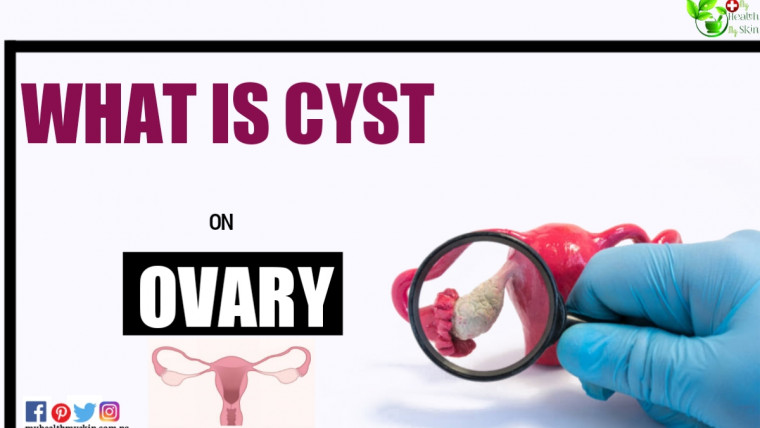Know the types of discharge, to identify when the pasty white discharge is worrying, check it out!
Most women who are attentive to their intimate health have already been concerned when they noticed a certain change in the volume, color or odor of the so-called “vaginal discharge”.
Many question, for example, what a “pasty white discharge” can mean.
In fact, this type of doubt exists because not everyone knows exactly what the discharge represents, when it can indicate a health problem and when it is considered “normal”.
“Discharge” is the popular term that refers to the increase in vaginal secretion, when the woman has a fungal infection, bacteria or protozoa. It can be white, yellowish and even greenish, causing itching, burning, pain and a bad smell.
Discharges (or vaginitis) can have an unpleasant odor and cause symptoms such as vulvovaginal itching, pelvic pain, pain during intercourse or other symptoms.
The main causes of discharge include:
- Vaginal infections;
- Vulvitis and vulvovaginitis;
- Cervical or cervical infections;
- STDs (sexually transmitted diseases).
It is important to differentiate vaginal discharge from physiological vaginal secretion (which is normal and not associated with infections).
What Are The Different Discharge?
Vaginal discharge can vary depending on the cause, that is, the type of associated infection. The most common discharges are those that occur due to the presence of infection with a fungus called Candida, and those that occur due to infection by bacteria or protozoa.
The characteristics of these main infections that cause discharge:
Candidiasis: infection of the vaginal walls by the fungus, which can lead to a white, “cream-of-milk” discharge, without a foul odor, but usually associated with vaginal and vulvar itching (pruritus).
Bacterial Vaginosis: a type of infection caused by bacteria present in the vagina, the most common being Garnerella vaginalis.
The discharge is abundant, with bubbles, has a grayish-white color, with a very fetid odor similar to ‘rotten fish’, not associated with itching.
Trichomoniasis: infection caused by Trichomonas vaginalis, a protozoan transmitted through sexual intercourse.
The discharge in this case is abundant, yellow-green in color, with a foul odor, it may be associated with not very intense itching and pelvic pain.
The most common discharges are caused by Candida and Gardnerella vaginalis.
In addition, another known type of discharge is associated with cervicitis (inflammation of the cervix, of viral, bacterial or parasitic origin). Such irritation can be caused by sexually transmitted diseases such as chlamydia, gonorrhea, HPV.
White, Odorless, Itchy Discharge
It is very important to differentiate “discharge” (disease) from normal vaginal secretion. Every woman has a small amount of fluid, odorless white secretion coming out of the vagina, this is good and keeps it lubricated.
At the time of ovulation, about 10 to 14 days after the onset of menstruation, there is a large release of mucus, a kind of colorless gelatin, to facilitate sexual intercourse and the rise of sperm so that fertilization takes place.
Many of the cases described as discharge by women are, in fact, the externalization of secretions from the glands present in the uterus, cervix and vaginal wall through the vagina.
Therefore, the discharge of vaginal secretions without a foul odor, white or light in color – transparent, without itching, are absolutely normal and depend on several aspects such as the phase of the menstrual cycle, the use or not of contraceptives, the hydration status of the woman, among others.
The volume of these vaginal fluids can vary at different times in the same woman. In these cases, there is no reason for concern.
In the first phase of the menstrual cycle, the vaginal fluid is egg white and abundant, but after ovulation it becomes thick and whitish.
Thick White Discharge With Itching And Irritation
It’s possibly a yeast infection. It is not normal and a consultation with the gynecologist is necessary.
In addition, discharge with these characteristics is highly suggestive of infection by Candida, the fungus responsible for candidiasis.
In these cases, mainly due to vaginal irritation and itching, women tend to seek the health service more quickly.
Once the diagnosis is confirmed, appropriate treatment should be carried out.
In addition, the treatment of candidiasis should be done with antifungal drugs orally or vaginally in the form of creams.
Candida is a frequent infection in women and is closely related to immunity. It is very common, for example, after the use of antibiotics to treat other diseases, as it modifies the vaginal flora and facilitates the growth of the fungus. Women with changes in immunity are more likely to have vaginal thrush.
In addition, here are preventive measures for this thick white discharge with itching and irritation (associated with yeast infection):
- Local hygiene measures: such as washing with soaps suitable for the area or glycerin.
- Avoid excess of these hygiene products and always rinse very well.
- Keep the genital area dry by avoiding long wet bikinis.
- Wash panties avoiding powdered soap, preferring coconut soap or those made for this purpose.
- Avoid very tight clothes in everyday life and sleep without panties.
- Moderate the consumption of sugar and refined white flour as they are real “food” for fungi.
In as much as fungus prefers warm and humid environments. Therefore, it reinforces the use of lighter, airy clothes, which help to reduce the risk of candidiasis. Immunity care is also important to avoid recurrent infections.
7 Signs Your Discharge Is Not Normal

Not all vaginal secretions are diseases. However, The vagina has a combination of fluids and cells that are important in protecting it. However, a woman should be careful when:
- There is an increase in the volume of the vaginal discharge;
- The color changes from white and crystalline to grayish-yellow, pus-yellow, greenish-yellow, green, yellowish-white, or other colors;
- The panties are damp every day, and can even be transferred to outer clothes;
- If there is a foul odor, especially during the menstrual cycle or after sexual intercourse;
- If you feel burning or pain when urinating;
- If there is vulvovaginal itching;
- If there is pelvic pain, pain during intercourse, or other symptoms.
Vaginal discharge is no longer physiological when it becomes symptomatic. In other words, when a woman starts to feel itching (itching), burning, bad smell or an increase in the amount. Therefore, she should see her doctor for a gynecological exam.
Now you know: vaginal discharges shouldn’t be a cause for concern. However, if you notice changes in its volume, color or odor, in addition to symptoms such as itching and pain (when urinating, during sexual intercourse), do not hesitate to seek medical help to diagnose and treat the cause of the discharge.
Reader Questions:
Can Thick White Discharge Be A Sign Of Pregnancy?
No discharge is a sign of pregnancy. There’s cervical mucus that increases in quantity at the time of ovulation. But it should not be said that this is discharge.
In pregnancy, due to hormonal changes, the presence of white and thick secretion is common, especially in the first months of pregnancy.
The high level of progesterone, an important hormone in pregnancy, causes this change in the cervical mucus that acquires these characteristics.
Nothing should be done about it, as this type of secretion is normal and physiological.
However, during the menstrual cycle, the amount, color and texture of cervical mucus change, thanks to hormonal fluctuations, as well as during pregnancy.
In suspected pregnancy, the woman should look for her obstetrician to make a specific evaluation and request the necessary tests.
The Differences Between Cervical Mucus and Vaginal Discharge
Vaginal discharge and cervical mucus can be used to define natural, white or clear, odorless secretions that do not indicate any pathology.
However, the term discharge is commonly used to determine when there is something wrong in the body.
What is Cervical Mucus
Secretion produced by glands of the uterine cervix, usually appears 10 days after the end of menstruation and can vary between a whitish or transparent tone, constantly compared to an egg white.
Cervical mucus is important for analyzing the menstrual cycle itself and the functioning of the body, as it is directly related to each phase of the cycle, in addition to having the function of protecting the uterus from bacterial, viral or fungal infections.
Each texture type has a different function , such as:
- Sticky: Indicator that the fertile period is over, occurs after menstruation. Its texture is thick with a white or yellowish appearance, it is a type of acidic secretion that serves to protect the intimate region from fungi or bacteria.
- Watery: Liquid discharge with little elasticity of white, yellowish or transparent appearance, it means that the fertile period is near.
- Egg white: It means the arrival of the fertile period, since its gelatinous and transparent texture facilitates the transport of sperm to the egg.
- Creamy: After the fertile period, the mucus becomes creamy, with a white or yellowish color, it has the function of reducing the mobility of sperm, characterizing the beginning of the non-fertile period.
What is Vaginal Discharge?
Vaginal discharge is a combination of fluids and cells that are shed with the intention of protecting the vagina.
You May Also Like:
- Yellow Discharge Without Smell: Should You Panic?
- Could The White Discharge Be A Sign Of Pregnancy? Check All Details Here!
- Remedy To Reduce Menstruation And Regulate The Cycle
- Saxenda Lose Weight? What It Is, Results And How To Use It
- Pimple Like Bump On Clitoral Hood: 13 Causes And Treatment
What Is A Normal Vag Discharge
This secretion is considered normal when it appears in small amounts and is not accompanied by other symptoms.
Therefore, vaginal discharge can be divided into physiological or pathological, meaning it can be natural or caused by disease or infection. This is defined from a few factors such as:
- Physiological discharge: Common and healthy, it can vary between whitish and transparent, it should have no odor and no other symptoms such as pain.
- Pathological discharge: Indicates the presence of some disease, which may have been caused by bacteria, fungi or protozoa and should be treated by a gynecologist.
What Are The Types Of Vaginal Discharge And What They Mean
To recognize if the discharge is healthy or not, it is necessary to be aware, each color of discharge can mean some type of infection, when accompanied by any other discomfort, such as itching, burning, bad smell and pain when urinating.
- White Discharge: The presence of white discharge accompanied by intense itching and pain when urinating, may indicate candidiasis.
- Yellow discharge: Accompanied by a bad odor, burning when urinating, it can be caused by the use of contraceptives or diseases such as trichomoniasis, chlamydia.
- Brown discharge : This type of discharge can indicate the beginning of pregnancy, or the presence of gonorrhea.
- Pink discharge: It can be a leak of blood caused by the use of contraceptives or a sign that there has been fertilization.
- Bumpy discharge: Grayish, abundant and frothy discharge accompanied by a bad smell, may indicate trichomoniasis.
White and Pasty Discharge
This type of secretion is more common, so it is necessary to identify the characteristics that will define it as a physiological or pathological discharge.
- Before menstruation: Pasty white discharge before menstruation is natural, as long as it is not accompanied by a bad smell, burning or itching.
- After ovulation: The pasty white discharge after ovulation represents the fertile period, as it facilitates the arrival of sperm in the egg.
- During sexual intercourse: It may indicate natural lubrication or female ejaculation.
- Sign of Pregnancy: Some pregnancy symptoms are characterized by menstrual delay, white pasty discharge and pain in the belly and back.
- During pregnancy: It is natural to experience an increase in this type of discharge during pregnancy, but it is necessary to be aware of the smell, itching or burning after urinating.
- Infection: White and pasty or milky discharge accompanied by intense itching, bad smell and pain when urinating, can mean candidiasis infection.
Factors that Cause Discharge
Factors that cause unusual discharge are:
- High levels of stress;
- Use of medications such as corticosteroids and antibiotics;
- smoking;
- Incorrect or excessive washing of the intimate region;
- Hormonal changes (contraceptive use, pregnancy or menopause);
- Unprotected sex;
- Use of synthetic or tight underwear;
- Saunas and swimming pools;
- Low immunity;
- Unbalanced food.
To prevent the emergence of infections, it is necessary to keep the intimate area cool, using cotton underwear, maintain a balanced diet and never wash the inside.
Treatment for Vaginal Discharge
The discharge should be odorless, or be accompanied by burning or painful urination and itching.
Therefore, it is necessary to consult a gynecologist to be able to carry out the proper treatment and ensure vaginal health.
If you want to read more articles similar to Is Pasty White Discharge Cause For Concern? We recommend you visit our Women’s Health category. Share on your social networks and stay tuned for upcoming articles.

Did You Know The Signs Of A Common And Unusual Discharge? Comment Below!







